How to Iterate on Winning Ads: The Basic Iteration
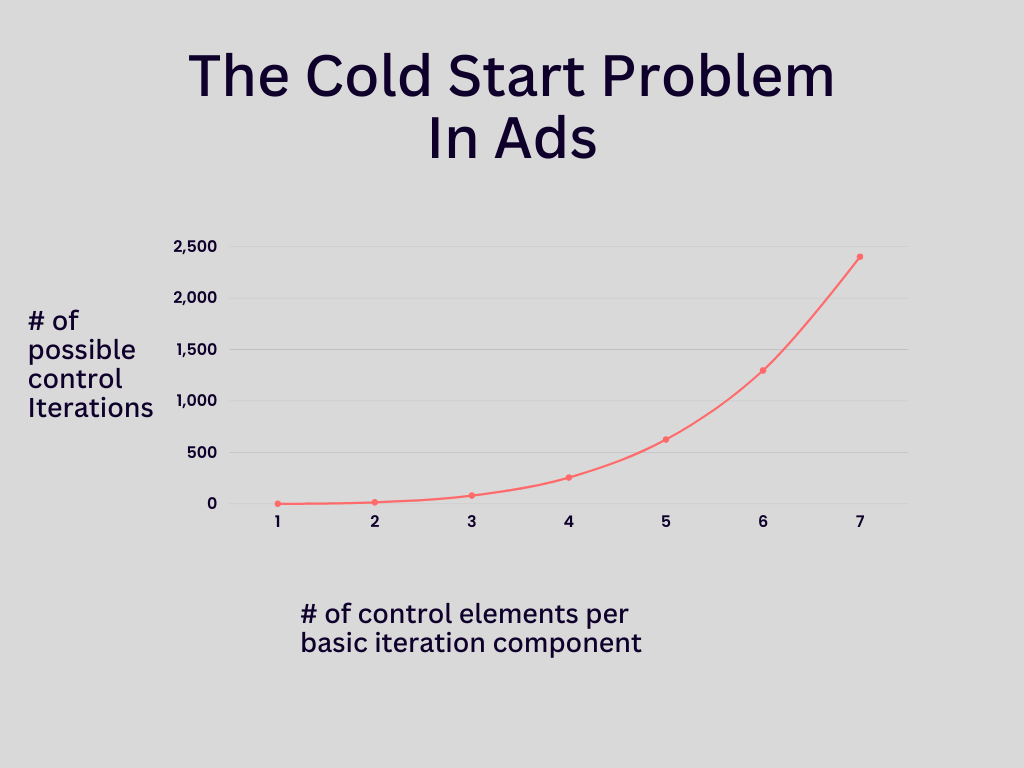
“Well, there are certainly original things to say. But I’m not sure that a pop song is the appropriate format to say them in.” ~ Stephin Merritt
In the previous sections we covered the creative hierarchy of needs, then the art of stealing your first ads from competitors. If you are starting to advertise your product for this first time, those sections are the appropriate place to start from scratch and land some initial control concepts. It is only once you’ve succeeded on copying multiple control concepts that you are ready to graduate to the basic iteration.
For those working for a relatively established product, with some existing winning creative, this section is going to be a great place to hop in and get a lot of value.
A Refresher
As a reminder, the creative hierarchy of needs are the various types of ads that can be made, in the sequence in which they should be mastered, in order to ensure repeatable success.
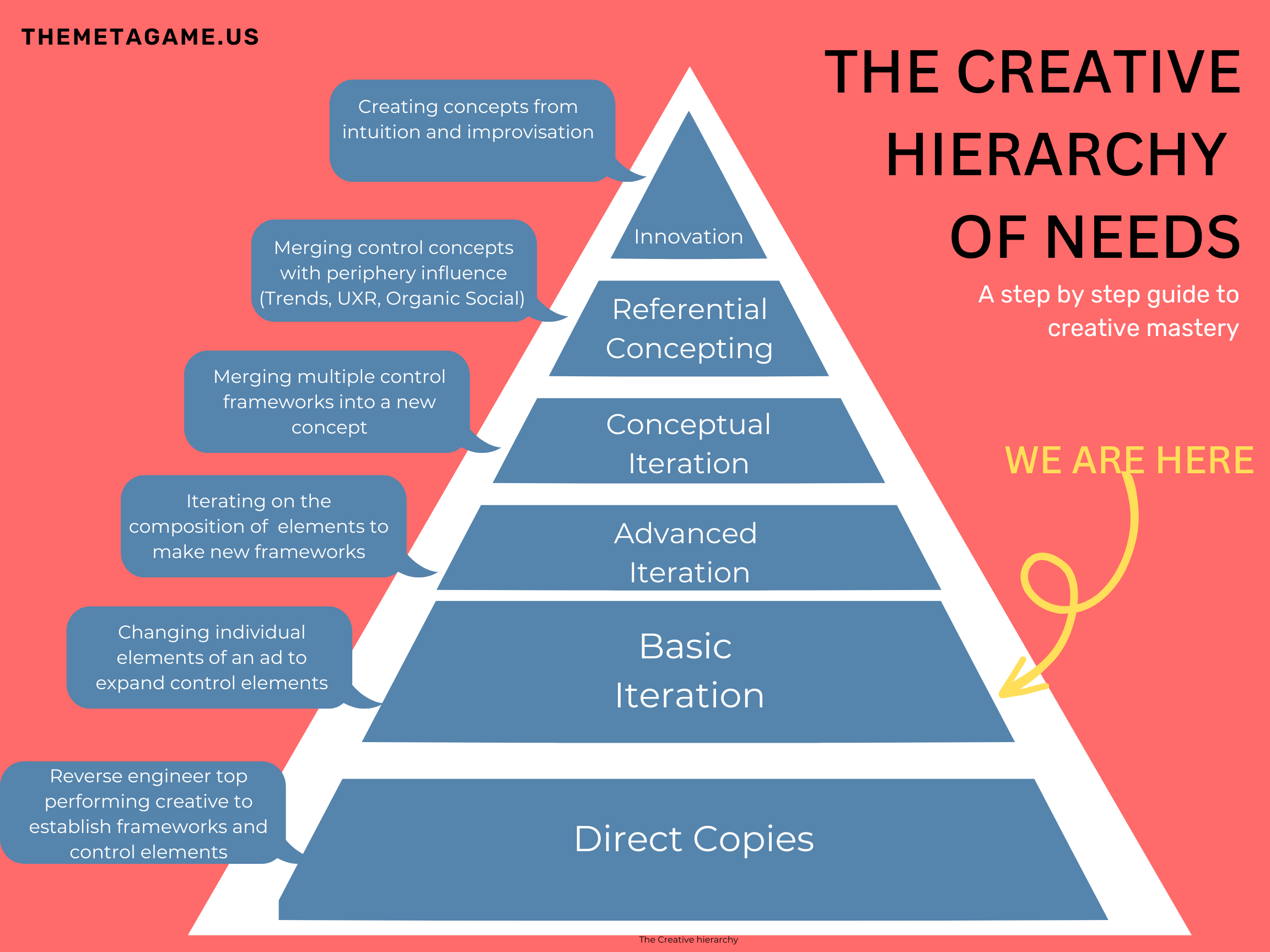
This is similar to Maslow’s hierarchy of needs, where success at the next level is dependent on a solid base below.
If someone moves ahead of themselves in creative development, just like any skill, they are unlikely to find themselves with the proper context or foundation to repeatably be successful at the next level.
What is the Basic Iteration
The basic iteration is the isolation of single components of an ad to make a very simple, controlled iteration — usually by introducing a previously proven component.
The resulting product isn’t going be a far departure from where one began.
As a result, a common perspective on basic iteration is that it is not divergent enough to be impactful. The reality is that a series of many small iterations end up being much more impactful than a single large win, and many creative teams can stay effective for years simply by using this tactic.
Furthermore, creating reliable outputs means having reliable systems.
If you are a fan of Pop Music, Sitcoms, or Hollywood movies, you are probably already aware of the basic iteration in some form.
It’s the four-chord progression that every single pop hit seems to have
It’s the opening act of a Sitcom, followed by some sort of problem or dilemma, a brief moment of comic relief, commercial break, and then a resolution.
Or the heroes Journey of the mega-blockbuster.
At it’s a core, basic iteration is a commitment to learning the basics, and the foundations of what we are doing and what makes people convert. Remember – people want you to play the hits.
When to use the basic iteration
For advanced creative programs of sufficient scale, basic iteration will likely represent 70%+ of all creative output, for two core reasons:
- basic iterations are the highest probability ads, and justifiably should make up a large percentage of your production
- basic iterations are also the most mechanical, and thus easiest to produce, which will make them more viable to meet the requirements of a high-spending ad program (given limited resources)
As a result, the basic iteration is the thing to master as a creative strategy practitioner. It is to creative strategy what the free-throw is to basketball. That is to say, in basketball even if you can make all the hard shots or dominate in the paint — you’re still probably not going to win if your team can’t step up to the line and hit all the easy shots to be successful.
The upshot is that the basic iteration is the cornerstone for both new and seasoned creative strategists.
For beginners, it will give you the proper constraints to brute force creative wins, resulting in the confidence and understanding of the core levers in advertising for your product.
And for advanced practitioners, the basic iteration is a critical fallback to keep a reliable stream of new blood pumping into Facebook — for wins at the higher levels of creativity are less predictable and often times require being deeply in the pocket of more complex dynamics, but creative fatigue never sleeps.
Types of basic iteration
A basic iteration, in essence, is the iteration of one “block” within an ad. You can slice things up however you would like to fit this definition, but let's use last post's creative example to isolate my favorite four blocks to iterate on.
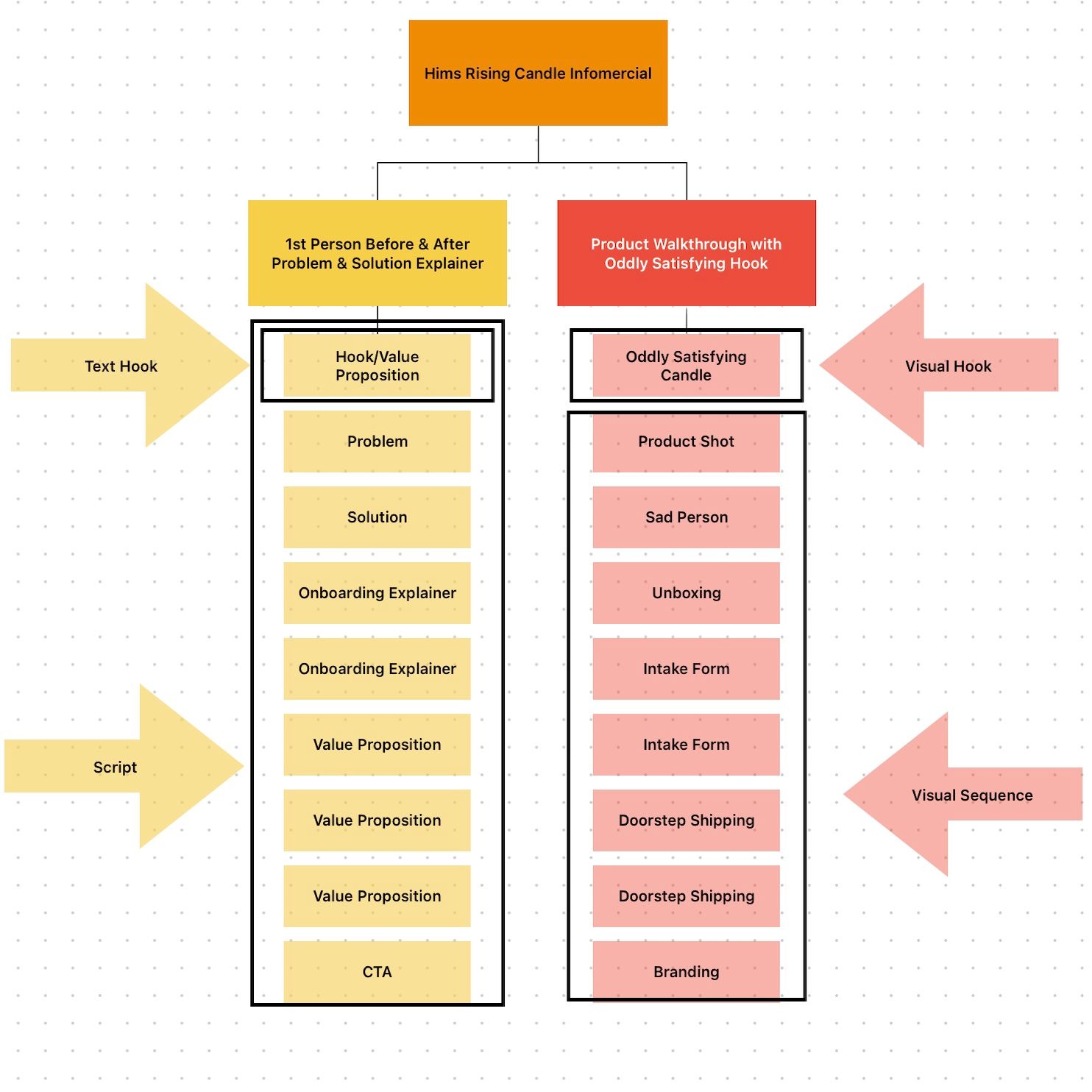
1. Visual Hook
Stopping the scroll is critically important, and the reason the visual hook is the #1 dimension to iterate on is that I have found the cost per 3 second view to be the #1 leading indicator for profitable creative. I like to use a balance of proven winners and new ideas for hooks.
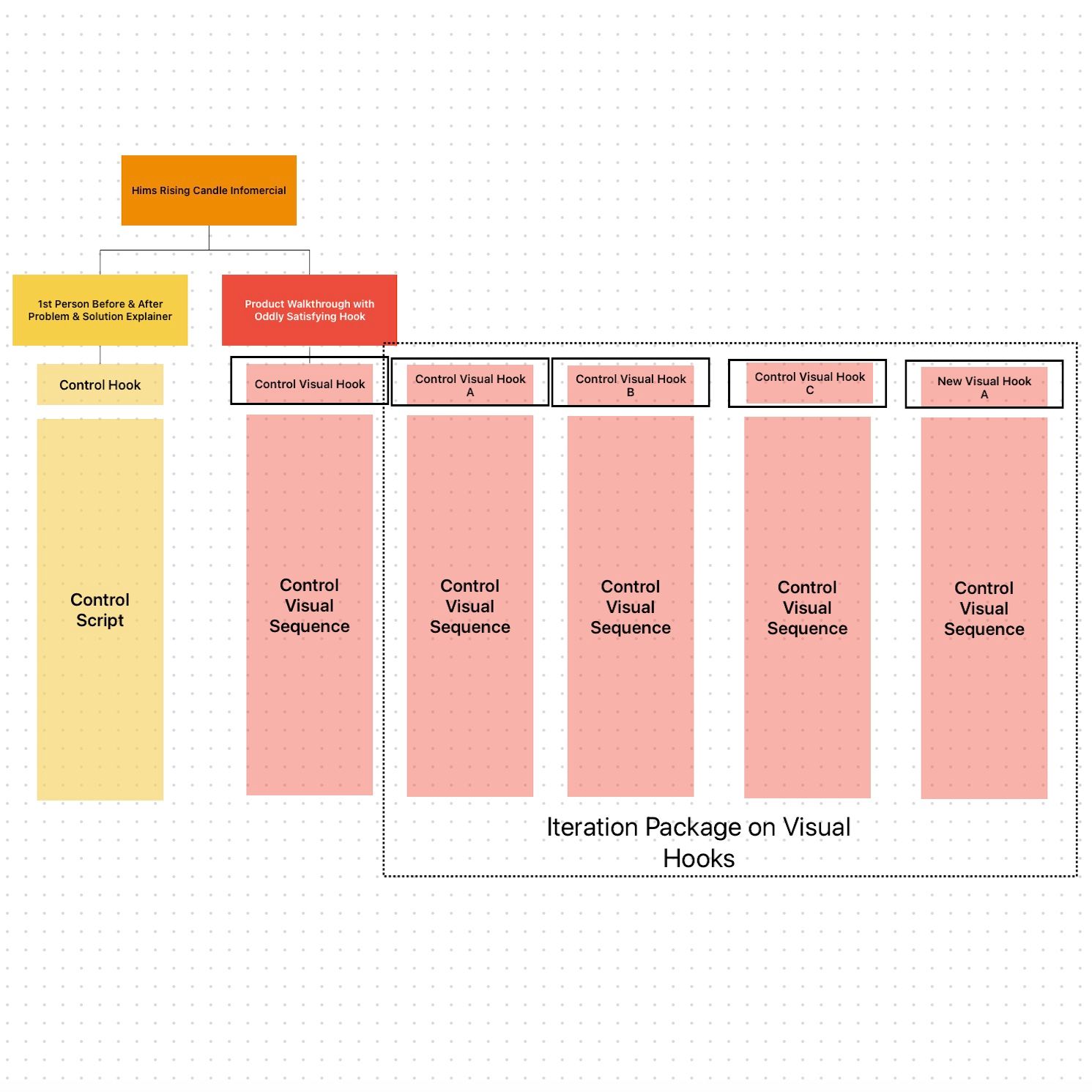
2. Scripts
The script can be defined as the entire copy, separated by line breaks. Once a strong visual hook has been identified, I like to build around it using previous winning scripts from a “creative menu” as boiler plate language
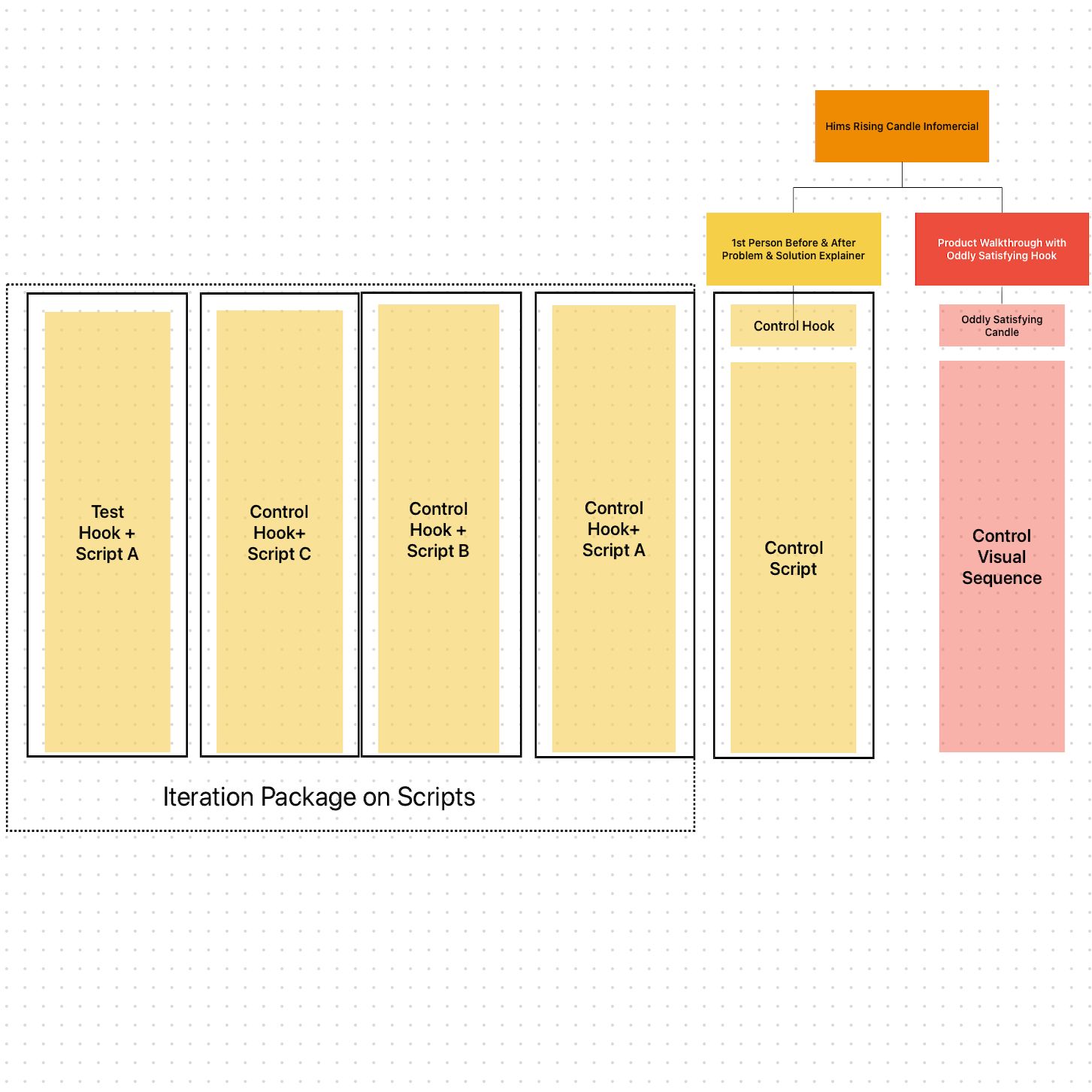
3. Text hook
Once visuals and script have been relatively optimized, I like to use the text hook to further mine within the creative territory. Pro tip: instead of trying to discover audiences by repositioning your product, try re-imagining your core value propositions (e.g., switching from 3rd to first person, re-writing as a testimonial, etc).
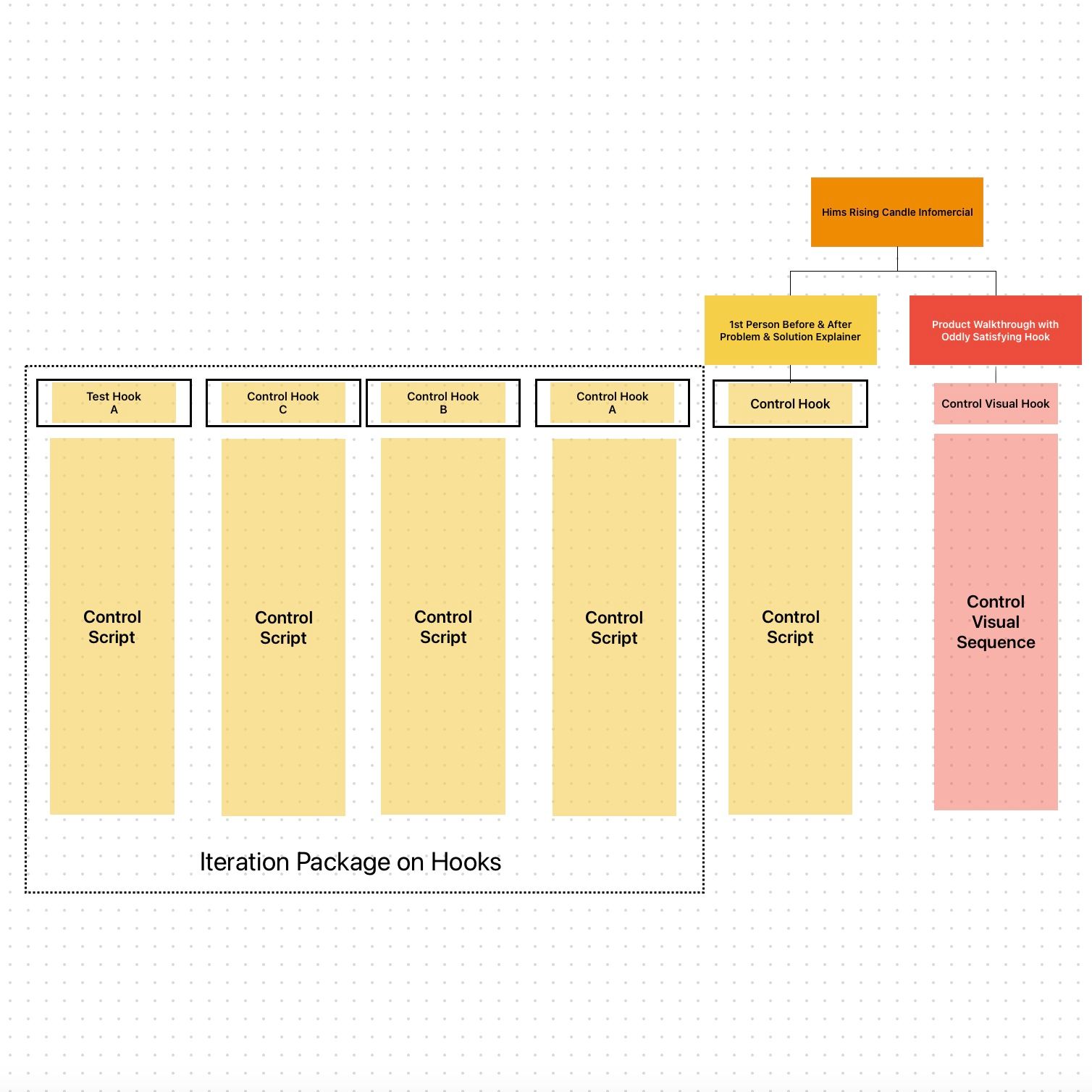
4. Visual Sequence
For whatever reason, the visual sequence after the hook often times will have a large impact on user retention or payer conversion, so this is the final optimization step.
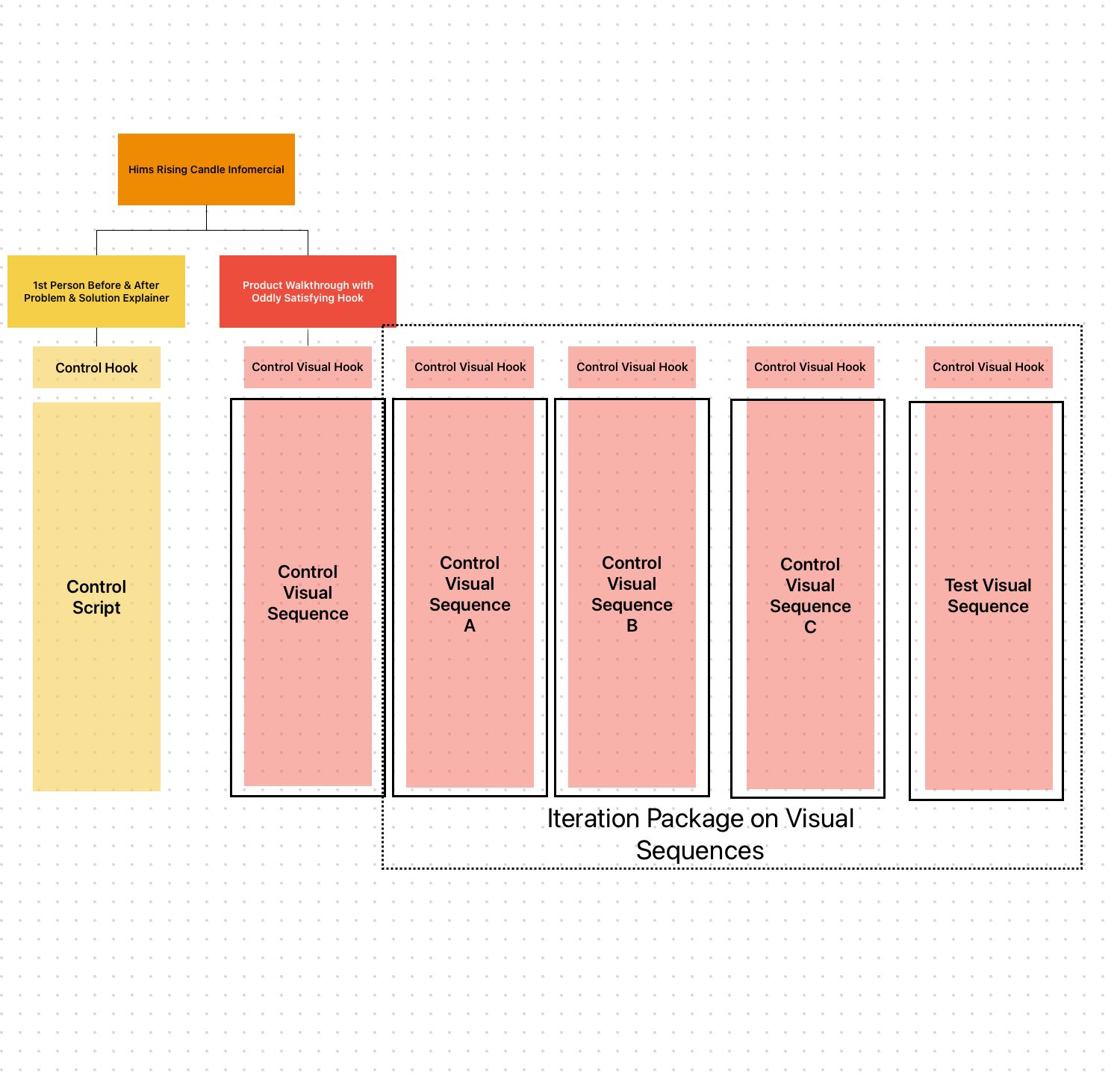
Testing
For all iteration tests, I tend to like to make 4 iterations (using mostly control elements and isolating either the visual or messaging side of things), then packaging everything up into a single adset for testing on meta. I find this is the right balance to both force structured thinking/testing and taking advantage of facebooks algorithm for selection.
I find it often takes iterating on two, three, or all four of these dimensions to find a winner, so have patience as long as things look promising.
In Practice
In our last edition, we talked about competitor comping and used Hims as an example, from the perspective of a fictitious Canadian clone, Hommes.
Well carry on once again, showing how Hims activates on Basic Iterations, and then use some of the examples from this and the last blog in order to build our own iterations.
You can see Him’s putting one of these basic iteration launch packages to use in their ad library, where they launched 5 assets, iterating on two separate dimensions.
Broken down, what we is that they have delivered 5 assets, iterating on visual hooks and scripts.
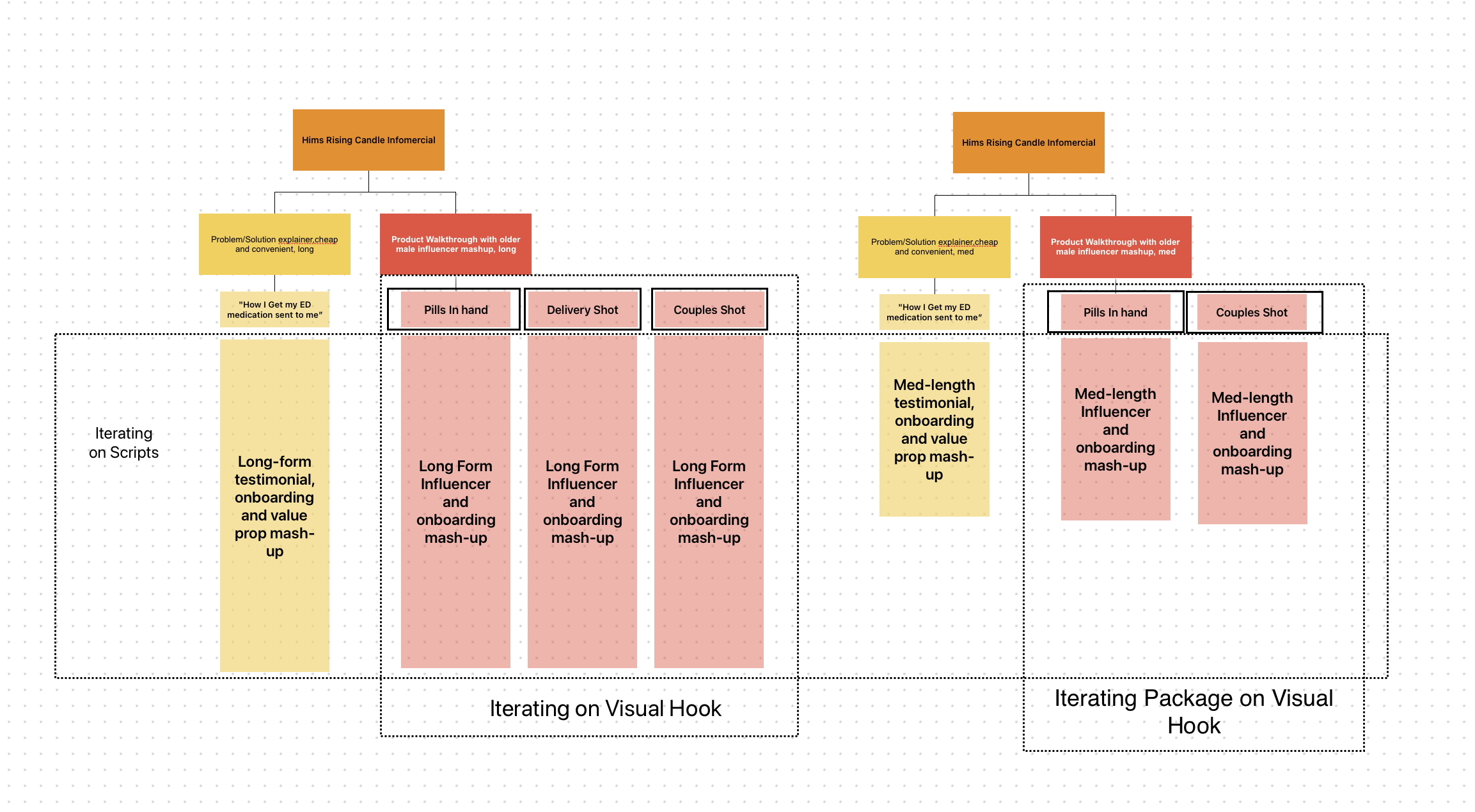
Let’s say that Hommes ripped all 5 of these ads and found two of them to be successful — The pills in hand⇒long form script and pills in hand⇒medium length script.
Hommes can permanently integrate these ads into a “Creative Menu” by breaking the ads down and aggregating all the common elements .
Breaking down pills in hand⇒long form script
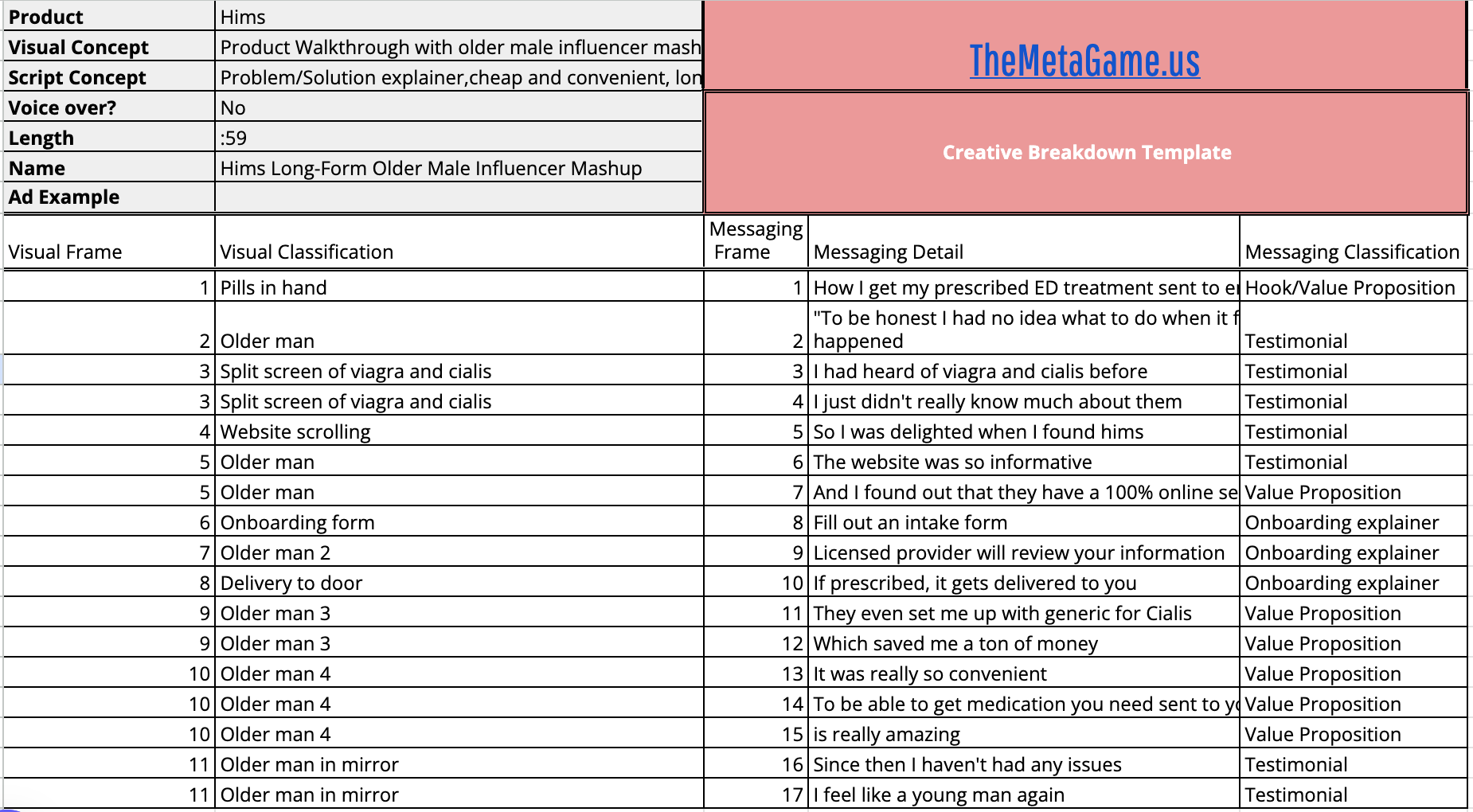
Breaking down Pills in hand⇒medium length script
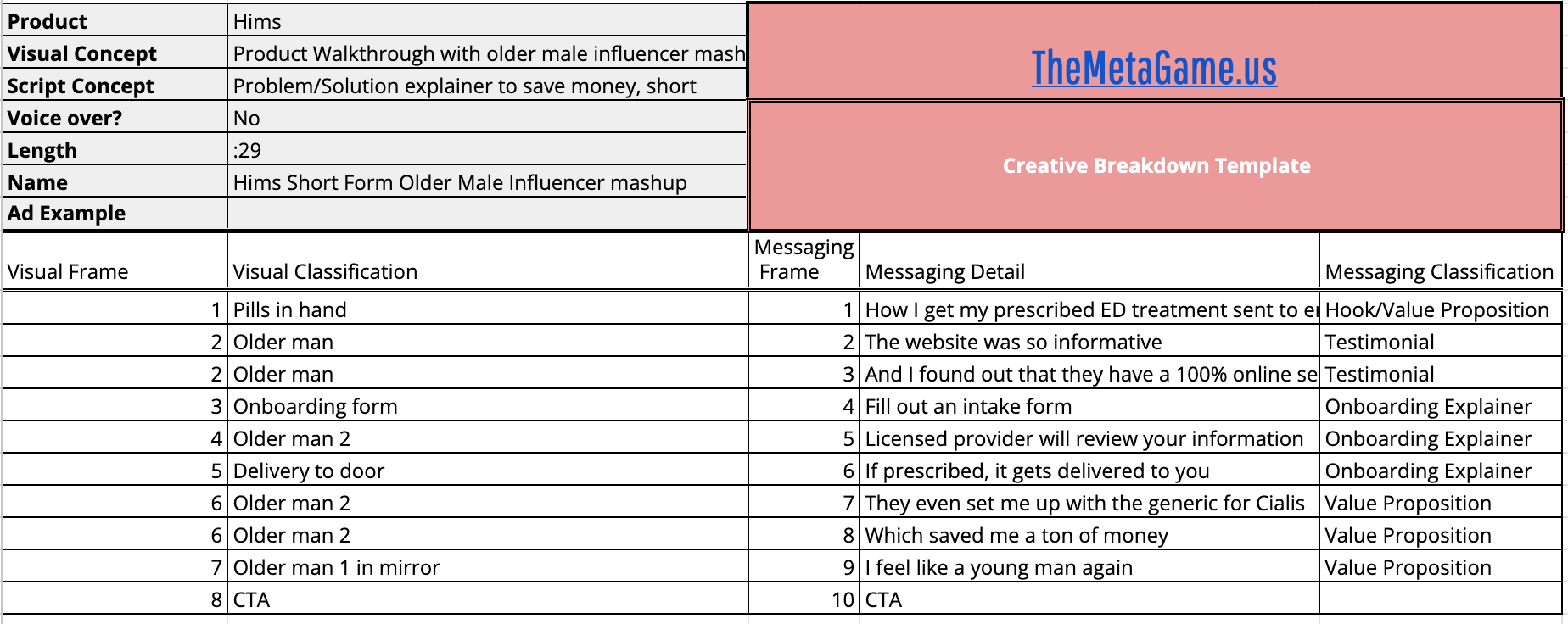
Adding winning elements to the Creative Menu
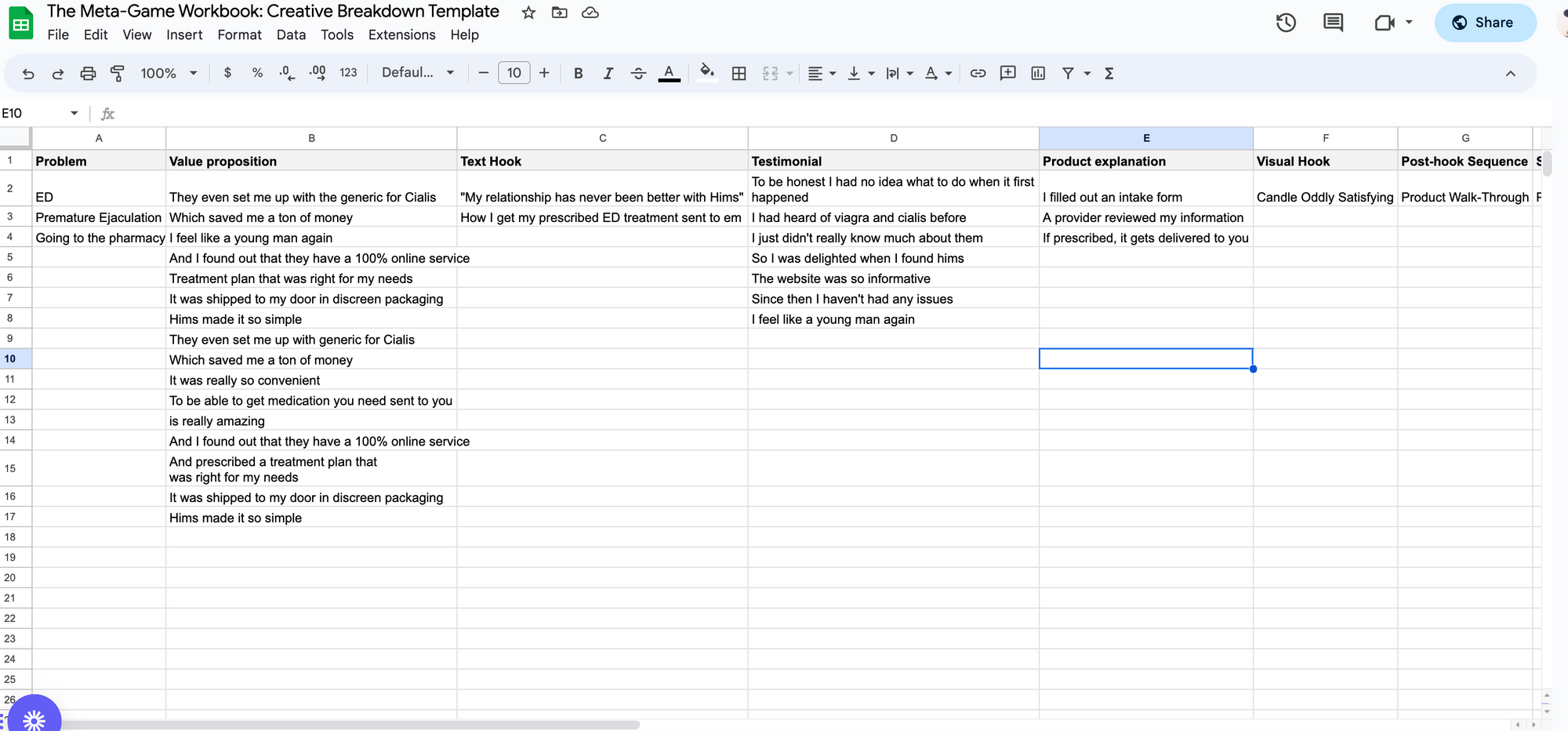
From this creative menu, Hommes has their mise en place to start iterating and gaining momentum, but they are still somewhat limited in their possible iterations. Before they move onto folding in new concepts, they should master basic iteration to get over the cold start problem in ads and set themselves up for the future.
The Cold Start Problem in ads
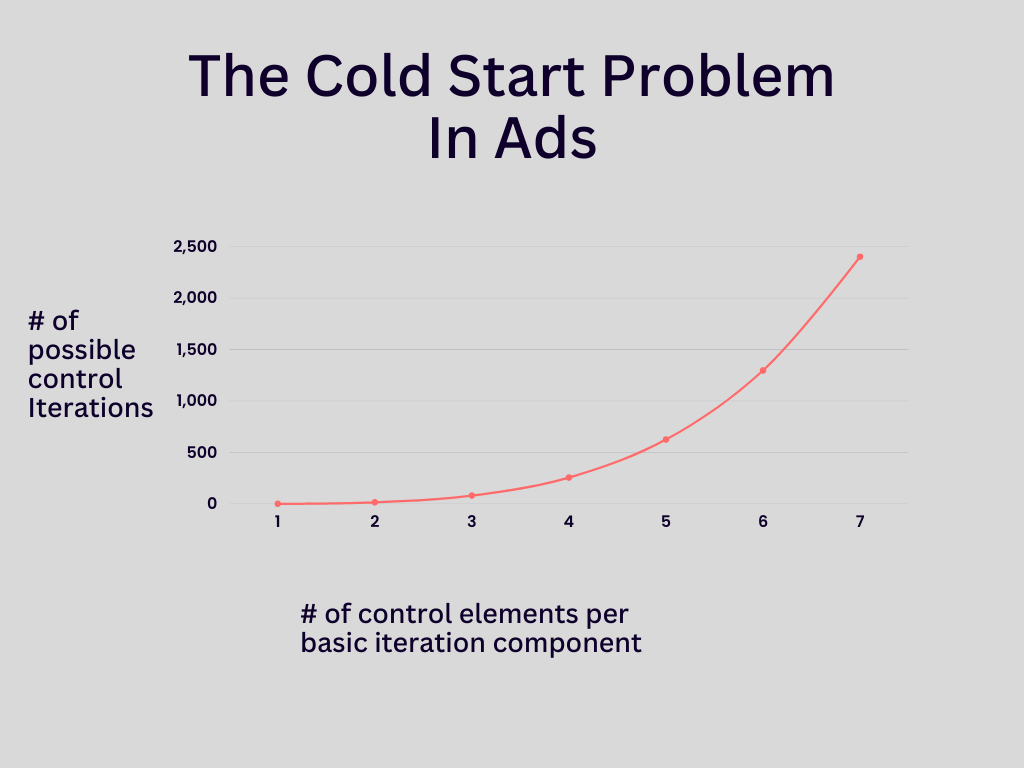
The two hardest parts of building a high performance ads system is building initial momentum, and then keeping up with that momentum at scale.
The problem of building momentum can be referred to as The Cold Start Problem, and the Basic Iteration can help you get passed the inflection point necessary to scale your production.
To illustrate, starting from our proven mix of control elements for Hommes, we have about 8 basic iterations
However, when we double the amount of elements in our creative menu, the number of possible controlled iterations starts to expand exponentially, which allows you to accelerate production.
The use of basic iteration and a creative menu solves the two problems we laid out by:
- Generating high probability creative to maximize the possibility of being successful to start
- Expanding the number of elements in our creative menu, which ultimately accelerates our process and reduces friction through mechanical production, making creative briefing and production very simple.
Building your Creative Menu with Basic Iteration
Now that we've covered the types of iteration and built our initial creative menu, let's get to work in scaling it out with iterations.
Iteration 1:
Iterating on our oddly-satisfying winner with new and control visual hooks
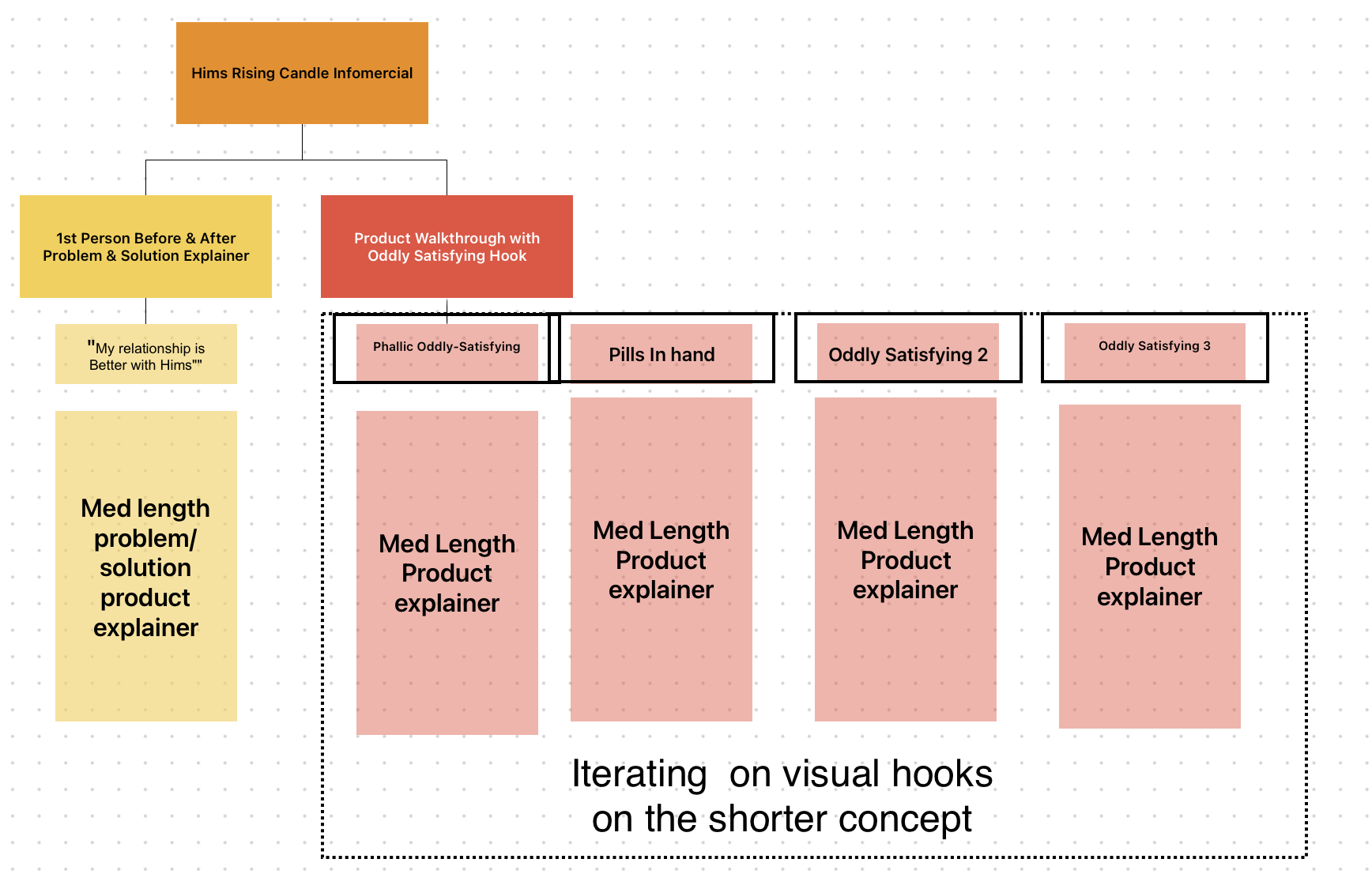
Here we use proven visual hooks as well as a couple new hooks. Keeping all elements except the hook isolated allows us to test into new visuals with confidence.
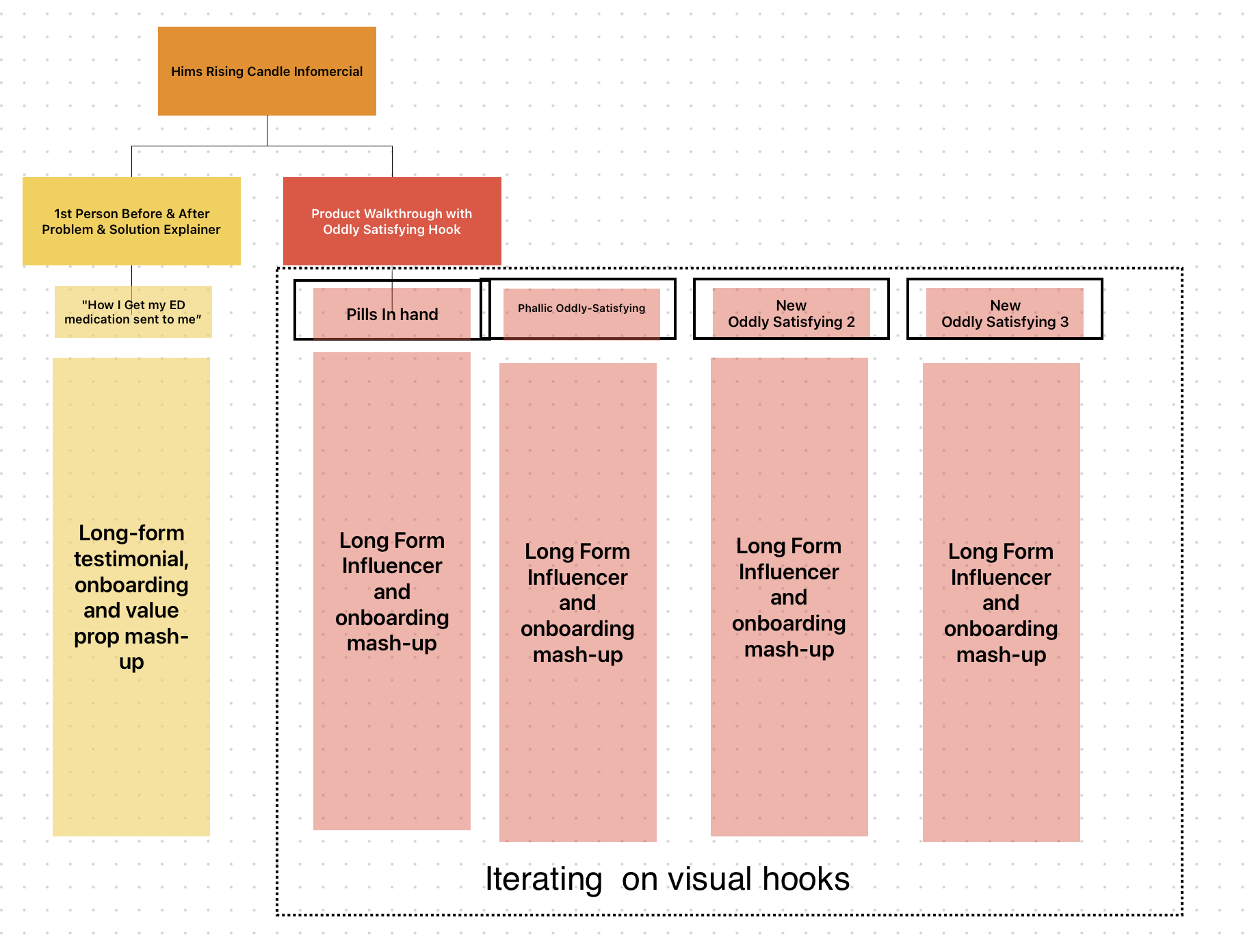
Then we can apply the same iteration to our latest winning asset (Pills in hand=>Long Form Script)
Iteration 2
Iterating on our oddly-satisfying winner with new and control text hooks
Here we use proven text hooks as well as repurpose proven value propositions to test as new text hooks. Repurposing value propositions as hooks is a very high probability iteration, because we have seen them in successful ads. New winners here get folded back into the creative menu as proven text hooks.
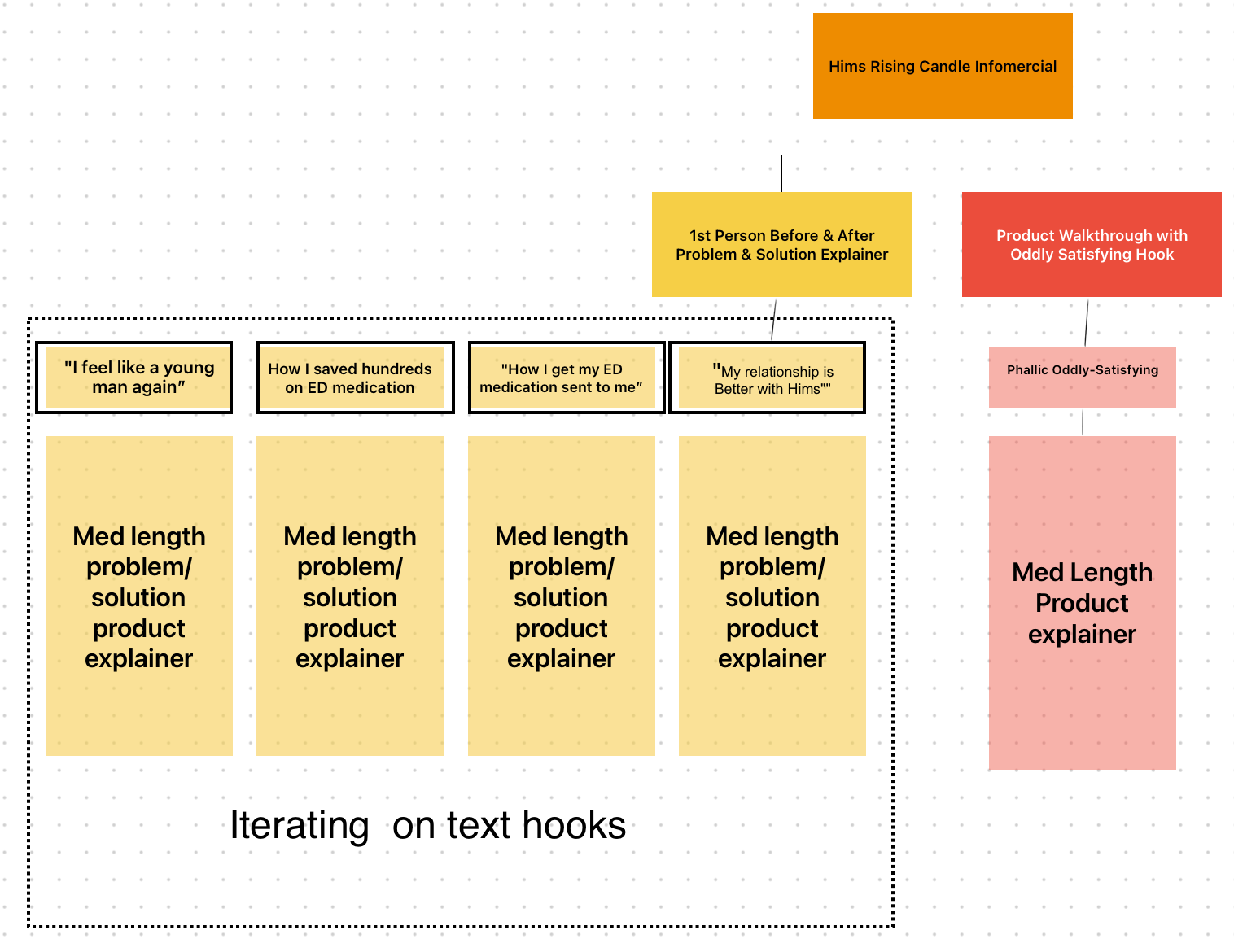
Iteration 3
Iterating on script

Once we discover a new visual hook winner and a new text hook winner, we can fold them back onto our other scripts in the creative menu to generate more winning combinations, getting us well on our way to exponential growth.
In conclusion
Basic iteration gives us the guardrails necessary to create high probability ideas at scale. By testing in components we are able to test with confidence and find new ideas for our system. Over time, new wins compound and exponentially increase the possible combinations of ads that can be built within basic iteration, which is critical for scaling high spending accounts and high-performing accounts.
In the next addition of The Meta Game, we will be going over advanced iteration, which are the foundations of developing common copy-writing frameworks such as AIDA, and restructuring concepts at higher levels of abstraction.